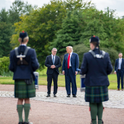Following the second defeat of the government’s withdrawal agreement, calls for a series of “indicative votes” in the House of Commons on what the country should do next have been renewed. The mantra that there is no majority in the Commons for any one Brexit proposal has been repeated over and over again. A series of indicative votes can break the deadlock but the devil is in the detail and it matters how it is organised.
So far in parliament, Theresa May’s Brexit deal has suffered defeat by large margins. A second referendum has been rejected and so has the “Malthouse compromise.” But that is because all options have been presented on a yes/no basis, when “no” is a vote for “not that proposal.” If there are three alternatives, A, B and C, then a ballot on A is, in effect, a ballot on A against B and C combined. In the case of Brexit, “not that proposal” is a bundle of many more different alternatives.
This shortcoming means that no proposal may command a majority. This, however, does not mean that there is no latent majority for any proposal. To establish if there is, each of the many possible options must be compared to every other in head-to-head votes. This will ultimately establish whether one can win a majority against all the others. Such a proposal is called the Condorcet Winner in social choice theory.
Democratic legitimacy, however, requires more than finding the Condorcet Winner. First, the open agenda principle requires that any alternative that commands support from some group of MPs must be on the agenda and an alternative cannot be excluded on the grounds that it is unfeasible, economically damaging, undemocratic, etc. Without this it is too easy to reject the eventual victor because an alternative had not been considered. Secondly, the neutrality principle requires that all alternatives are treated in the same way and ensures that the procedure does not itself bias the final choice. Violating neutrality would expose the procedure to the accusation that the process was rigged.
If MPs vote sincerely according to their views, and non-strategically, then there are well-known methods that satisfy the two principles and select the Condorcet winner: you can vote in each head-to-head round or ask the MPs to rank the alternatives, and then work out which commands a majority against all the others. However, we have strong reasons to believe that the MPs will vote strategically; if so, these methods may not work well.
We propose instead to adopt a sequential voting procedure that selects the Condorcet Winner with strategic voting. It is a multi-round procedure in which in each round MPs vote between all remaining alternatives and the one with the least support (say, May’s deal, or Remaining in the EU) would be eliminated. Voting continues until only one alternative is left. To see the logic, consider the final round. Since at that point, each MP will vote for his or her preferred alternative, whichever of the two is preferred by the majority will win. Working backwards, in the penultimate round there are three alternatives and the MPs know that if one particular option reaches the final round it is likely to win. Accordingly, a majority of MPs wants to avoid eliminating that outcome and thus votes for it. The same logic applies to all the other rounds, and eventually the procedure will select the Condorcet winner.
The House of Commons could implement the proposed procedure through a sequence of indicative votes that would end with a binding vote between the two last alternatives. Unanimous consensus on the Brexit question is unachievable. However, it is within reach to structure process to ensure fairness and to reach an outcome that is preferred by a majority to any other.
Toke Aidt, Reader in Economics, University of Cambridge
Jagjit S Chadha, Director, National Institute of Economic and Social Research
Hamid Sabourian, Professor of Economics and Game Theory and Chair of the Faculty of Economics, University of Cambridge
How to find out what MPs really want
The way to hold indicative Brexit votes in parliament
March 15, 2019

Photo: Matt Crossick/Matt Crossick/Empics Entertainment











